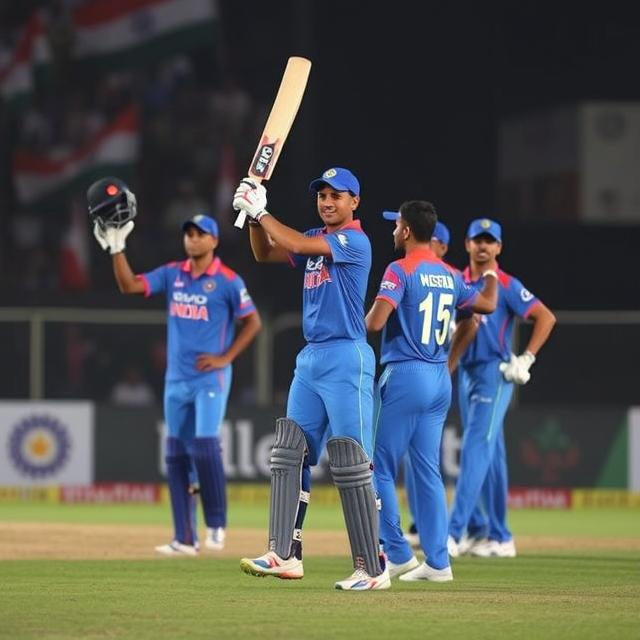Unveiling the Smallest Cricket Stadiums of Pakistan

Unveiling the Smallest Cricket Stadiums of Pakistan
Cricket, a sport deeply ingrained in the Pakistani cultural fabric, is played with passion and fervor across the nation. From bustling international stadiums to smaller, community-driven grounds, Pakistan boasts a diverse landscape of cricket venues. This article dives deep into the realm of Pakistan’s smallest cricket stadiums, exploring their unique characteristics, historical significance, and ongoing importance to the game at the grassroots level. Discover the hidden gems of Pakistani cricket!
A Nation of Cricket Grounds: Beyond the Big Names
Pakistan’s cricket history is replete with unforgettable moments, from legendary matches to passionate crowds. However, behind the grandeur of international stadiums, lies a rich tapestry of smaller venues, often overlooked but undeniably crucial to the development of the game. These intimate arenas are where young talent blossoms, where local heroes are born, and where the love for cricket is nurtured, one game at a time.
Defining “Smallest” – A Matter of Perspective
Defining the “smallest” cricket stadium is not straightforward. Various factors contribute to the overall capacity and size, including the dimensions of the playing field, the seating capacity (if any), and the surrounding facilities. While a strict, quantitative definition may be difficult, this exploration will focus on venues that cater primarily to local matches and offer a unique, intimate atmosphere. We’ll be delving into a variety of considerations, offering a multifaceted understanding of what makes these grounds “smallest.”
Exploring the Factors that Influence Stadium Size in Pakistan
Several key elements influence the size of cricket stadiums in Pakistan. The availability of land, the financial resources of the local community, and the demand for cricket facilities all play pivotal roles. Furthermore, the type of cricket being played often determines the required space. International matches demand larger facilities with greater infrastructure, while smaller venues may suffice for local competitions. The focus in this article will be on understanding this dynamic, showing that even the smallest venues have a meaningful impact on the cricketing landscape.
The Historical Significance of Small Grounds
Historically, small cricket stadiums in Pakistan have served as critical hubs for community engagement. Often, these grounds were not just places to play cricket; they were social centers, fostering camaraderie and a shared sense of belonging. The echoes of past matches, the cheers of the crowd, and the stories of local heroes are etched into the very fabric of these venues. They represent a connection to the roots of Pakistan’s cricketing heritage, a reminder of where it all began.
Challenges Faced by Small Stadiums
Unfortunately, several challenges face these vital community cricket hubs. Limited funding for upgrades and maintenance can affect the playing surface, and the availability of basic facilities often leaves something to be desired. Sometimes, the local authorities, while supportive, might face resource constraints, making the upkeep of these grounds a constant struggle. Understanding the challenges faced by these venues helps us appreciate the even greater significance of their existence.
The Role of Small Stadiums in Cricket Development
Despite the challenges, the contribution of these smaller stadiums to Pakistan’s cricketing ecosystem cannot be overstated. They provide vital training and playing opportunities for budding cricketers, particularly in the formative stages. These smaller venues offer a breeding ground for talent, nurturing the next generation of Pakistani cricket stars, in many cases. This vital grassroots development is a crucial aspect often missing from broader discussions.
Case Studies: A Glimpse into Pakistan’s Small Stadiums
To provide a clearer picture, let us briefly explore some examples of smaller stadiums and their impact on local communities. (Note: Specific names of small stadiums and detailed data might not be readily available, requiring potentially further research for complete information). Imagine the vibrant scene of local cricket matches, the roar of the crowd, and the excitement of the game! Each stadium carries its own unique story, a testament to the passion of Pakistani cricket fans. The spirit of competition and camaraderie lives on, even in the smallest of grounds.
The Future of Small Cricket Stadiums in Pakistan
The future of these smaller venues depends on various factors, including sustained community support and the commitment of local authorities to allocate resources towards their upkeep. Moreover, strategic partnerships, involving cricketing organizations and local philanthropists, can play a crucial role in revitalizing and maintaining these vital community spaces. The efforts to enhance and preserve these venues for future generations deserve significant attention.
Conclusion: Honouring the Smaller Stage
The smallest cricket stadiums in Pakistan are more than just venues; they are microcosms of the nation’s passion for cricket. They represent the roots of a sport that has captivated generations. These grounds, often overlooked, are integral to the development of the game, nurturing talent and preserving a vital link to Pakistan’s cricketing heritage. As Pakistan continues its cricketing journey, let us not forget the importance of these smaller stages where dreams are sown and legends are born. The smallest stadiums often hold the biggest stories, and their significance deserves recognition and support.
Further Research and Collaboration
Further research, potentially involving collaborations with local cricket communities and organizations, could provide valuable insights into the specifics of smaller stadiums and the impact they have on different parts of Pakistan. This would enrich our understanding of the multifaceted role these venues play, offering a nuanced view of the sport’s broader ecosystem.